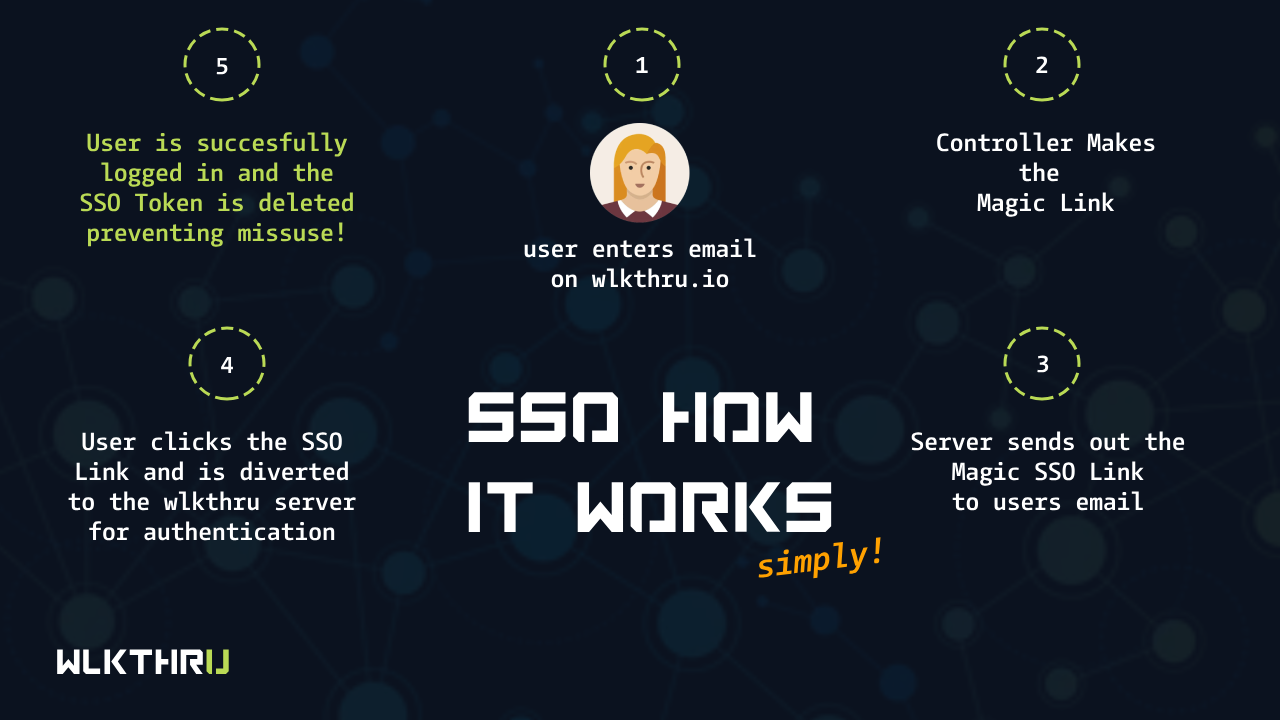In the world of cybersecurity, passwords are the oldest and most persistent nuisance. They’re a relic of the early web, a system we all still rely on, despite their flaws being widely known and frequently exploited. From forgotten credentials and phishing attacks to password reuse and data breaches, passwords are more of a liability than a security mechanism.So why do we still cling to them?The answer is simple: familiarity. But in an age where security threats evolve faster than most organizations can respond, clinging to outdated methods is risky at best, and disastrous at worst.Enter Single Sign-On (SSO), a modern, centralized solution that doesn't just patch up the problem of passwords, it renders them largely obsolete. SSO isn't just a convenience layer; it's a transformative way to authenticate, manage access, and secure the digital front door of your organization.The Password Mess We’re Stuck InPasswords were never designed to scale with today’s digital complexity. Most people juggle dozens of services daily, and managing unique, secure credentials for each one is impossible for the average user. The result is an ecosystem of reused passwords, weak combinations, sticky notes, and insecure storage practices.From a technical standpoint, passwords are low-hanging fruit for attackers. Phishing emails, keyloggers, credential stuffing, and brute-force attacks all exploit this single point of failure. Add to that the administrative overhead of constant reset requests, account lockouts, and security policy enforcement, and the password becomes not only a security risk but a major drain on productivity and resources.The Rise of SSOSingle Sign-On completely changes the game. Rather than managing credentials for every individual service, users authenticate once via a central identity provider—like Okta, Google Workspace, or Azure Active Directory and then access all authorized applications without logging in again.This approach simplifies access. It also enforces consistency. Rather than managing individual accounts and logins across dozens of tools, administrators can control everything from one place. If an employee leaves the company, their access is revoked once, and it’s revoked everywhere. No missed accounts. No lingering access to sensitive data. Just clean, efficient security.SSO also enables stronger enforcement of multi-factor authentication. Instead of users being prompted by ten different apps for a second factor, they’re prompted once, at the identity provider level. This drastically improves adoption and reduces the friction that often leads teams to disable MFA altogether.Productivity Meets SecuritySSO isn’t just about security. It’s also a huge win for productivity. With fewer logins to manage, users spend less time resetting passwords or fumbling through login screens and more time actually doing their work. Onboarding new team members becomes faster and more consistent. Helpdesk requests for password resets drop dramatically. In fact, many organizations save hundreds of thousands of dollars annually just by reducing password-related support tickets.More importantly, SSO empowers businesses to adopt new tools faster. Adding a new SaaS platform to your workflow no longer means creating, managing, and securing another account. With SSO in place, integration becomes a matter of minutes, not hours.Better Compliance, Stronger GovernanceFor regulated industries like healthcare, finance, or any business handling customer data, SSO also simplifies compliance. Regulations often require detailed audit logs, clear access controls, and strong identity verification. SSO provides all three. It centralizes identity governance, making it easy to demonstrate who had access to what, when, and from where. Combined with conditional access policies and usage monitoring, it forms the foundation of a zero-trust architecture, something increasingly essential in today’s threat landscape.Addressing the Common ObjectionsCritics of SSO often raise a few common concerns. The first is that if SSO is compromised, all systems become vulnerable. While that’s technically true, it’s also misleading. A properly configured SSO environment uses strong encryption, real-time monitoring, device and location-based policies, and robust multi-factor authentication. In reality, a centralized, hardened authentication system is far more secure than 50 loosely guarded accounts spread across different services.Another objection is cost. It’s easy to assume that SSO is a premium enterprise-only solution. But that’s no longer the case. Many identity providers offer affordable pricing for small teams or integrate SSO functionality into platforms businesses already use. Open-source options like Keycloak or Authentik also make SSO accessible to those willing to roll up their sleeves.Finally, there’s the argument for password managers as an alternative. While password managers are useful for individuals, they don’t solve the core issues of fragmented identity, access sprawl, or compliance. They’re a helpful band-aid, but SSO is the cure.When Passwords Still Have a RoleTo be fair, there are cases where passwords might still be necessary. Legacy systems, third-party vendors without modern authentication support, or short-term contractor access may still rely on traditional credentials. But these should be exceptions, not the norm. Even in these scenarios, organizations can wrap those services in secure gateways or identity brokers to maintain control.The Wlkthru.io PerspectiveAt wlkthru.io, we teach cybersecurity not just as a checklist of tools but as a philosophy of risk reduction and attacker mindset. In that world, passwords are a glaring vulnerability. That’s why we encourage startups, scaleups, and enterprises alike to rethink their approach to access control.Our training emphasizes federated identity, SSO-first architectures, passkeys for passwordless logins, and tight integration between authentication and authorization systems. We’ve seen firsthand how much safer, and smoother operations become when companies shift to a secure, centralized model.The VerdictPasswords are a legacy we’ve outgrown. They were a necessary evil for a different era, but today they are one of the weakest links in our digital defenses. Single Sign-On doesn’t just patch that weakness; it replaces it with a smarter, safer, and more scalable solution.If you care about security, productivity, or compliance, the writing is on the wall. The age of passwords is ending.SSO is the future.And in the battle for authentication supremacy, SSO is the undisputed king.
